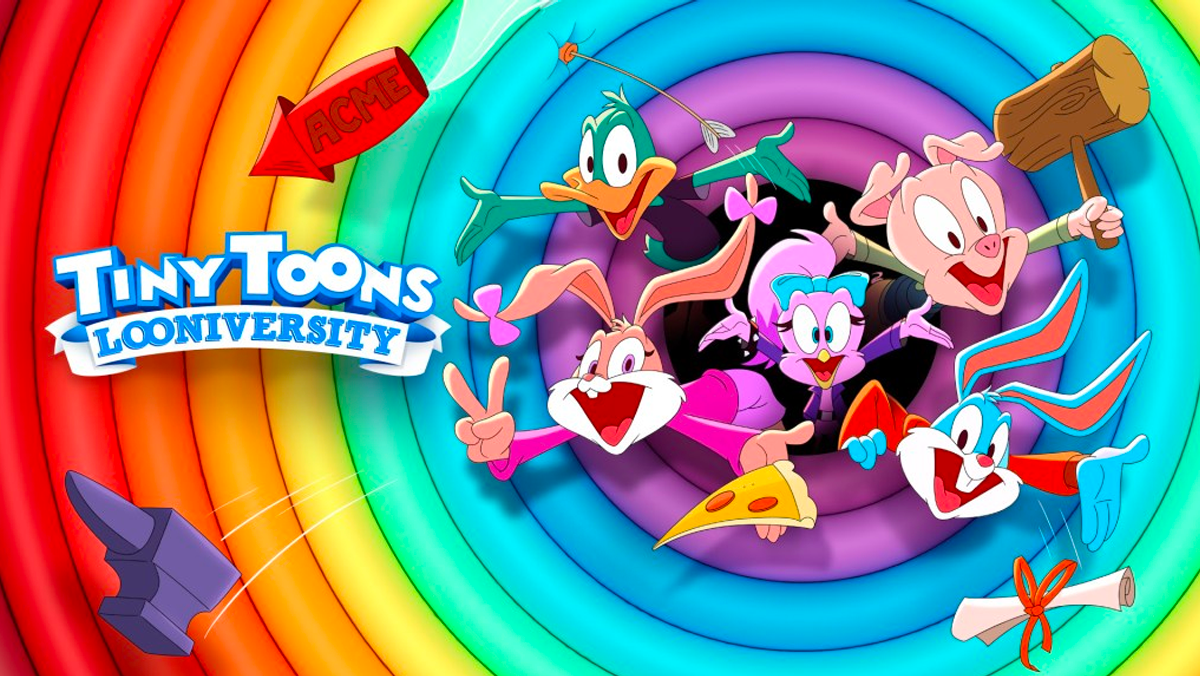In the whimsical world of animation, few franchises have left as indelible a mark as Looney Tunes. Known for its zany characters and slapstick humor, this animated series has captured the hearts of audiences young and old. The "tiny explosive cartoon looney tunes" perfectly encapsulates the essence of this franchise, where characters like Bugs Bunny, Daffy Duck, and Tweety Bird engage in outrageous antics that often involve explosive situations—both literally and figuratively. With its vibrant colors, catchy tunes, and unforgettable catchphrases, Looney Tunes continues to be a beloved staple of pop culture.
The charm of the "tiny explosive cartoon looney tunes" lies in its clever storytelling and the relatability of its characters. Each episode combines humor with life lessons, making it not only entertaining but also educational. Moreover, the series has transcended generations, ensuring that the antics of these tiny characters remain relevant in today’s fast-paced world. From the classic "What’s Up Doc?" to the feisty rivalry between Road Runner and Wile E. Coyote, the series is filled with memorable moments that are hard to forget.
As we delve deeper into the world of Looney Tunes, we will explore the origins of these tiny explosive characters, their evolution over the years, and their impact on the animation industry. The question remains: what makes these characters so enduring and beloved? Join us as we unpack the magic and mayhem of the "tiny explosive cartoon looney tunes."
What Are the Origins of Looney Tunes?
The origins of Looney Tunes can be traced back to the late 1920s, when Warner Bros. sought to create a series of animated shorts that would rival Disney’s success. The first short, "Sinkin' in the Bathtub," premiered in 1930, but it wasn’t until the introduction of characters like Porky Pig in 1935 that the series truly began to take off. The addition of iconic characters like Bugs Bunny and Daffy Duck solidified Looney Tunes as a cultural phenomenon.
Who Are the Most Iconic Characters in Looney Tunes?
- Bugs Bunny: The wise-cracking rabbit known for his catchphrase, "Eh, what's up, doc?"
- Daffy Duck: The comically self-absorbed duck who often finds himself outsmarted.
- Wile E. Coyote: The determined predator whose elaborate schemes to catch the Road Runner often backfire.
- Tweety Bird: The cute canary who always seems to outsmart Sylvester the Cat.
- Yosemite Sam: The short-tempered cowboy who often clashes with Bugs Bunny.
How Did Looney Tunes Evolve Over the Years?
As time passed, Looney Tunes adapted to the changing landscape of animation and audience preferences. The series moved from theatrical shorts to television with "The Bugs Bunny Show" in the 1960s, introducing a new generation to the antics of these tiny explosive characters. With the rise of merchandising in the 1990s, Looney Tunes capitalized on its popularity, expanding into video games, toys, and clothing, further embedding the characters into the fabric of popular culture.
What Role Does Humor Play in Looney Tunes?
Humor is the lifeblood of Looney Tunes. The creators expertly blend physical comedy with witty dialogue, resulting in a unique style that appeals to various age groups. The slapstick nature of the "tiny explosive cartoon looney tunes" often involves exaggerated actions and over-the-top scenarios. This humor not only entertains but also allows viewers to escape reality, providing a much-needed dose of laughter.
What Are Some Memorable Episodes of Looney Tunes?
- Rabbit Seasoning: A classic episode featuring Bugs Bunny and Daffy Duck in a hilarious debate over hunting season.
- Duck Dodgers in the 24½th Century: A sci-fi spoof that showcases Daffy Duck as a bumbling space hero.
- The Great Piggy Bank Robbery: Daffy Duck's misadventures as he tries to save a bank from being robbed.
- What on Earth!: Bugs Bunny's encounter with Marvin the Martian leads to comedic chaos.
How Has Looney Tunes Influenced Modern Animation?
Looney Tunes has profoundly influenced modern animation, inspiring countless animators and creators. The series set a precedent for character-driven storytelling, showcasing the importance of creating relatable and humorous characters. Many contemporary animated shows, such as "The Simpsons" and "Family Guy," owe a debt to the groundbreaking work of Looney Tunes, particularly in their use of satire and parody.
What Is the Legacy of Looney Tunes Today?
Today, Looney Tunes remains a beloved franchise that continues to resonate with audiences. The characters have evolved to suit modern sensibilities, appearing in new content such as the "Looney Tunes Cartoons" series on HBO Max. Additionally, the franchise has expanded into various forms of media, ensuring that the "tiny explosive cartoon looney tunes" will continue to entertain for generations to come.
Are There Any New Characters in Looney Tunes?
While the classic characters dominate the franchise, new characters have been introduced to keep the series fresh and engaging. These characters often pay homage to the original cast while bringing a modern twist. For instance, characters like Lola Bunny have gained popularity, further diversifying the Looney Tunes roster.
What Makes Looney Tunes Timeless?
The timeless appeal of Looney Tunes lies in its ability to entertain through humor, creativity, and relatability. The themes explored in the series, such as friendship, rivalry, and perseverance, resonate across generations. Moreover, the animation style, catchy music, and unforgettable characters have cemented Looney Tunes as an integral part of animation history, ensuring that the "tiny explosive cartoon looney tunes" will always hold a special place in the hearts of fans.
Unlocking Financial Opportunities With Homefield Credit Union In Grafton, Mass
Exploring The Century Rio 24 And XD: A Comprehensive Guide
Understanding The Role And Importance Of Polish Consular Services
.png)

